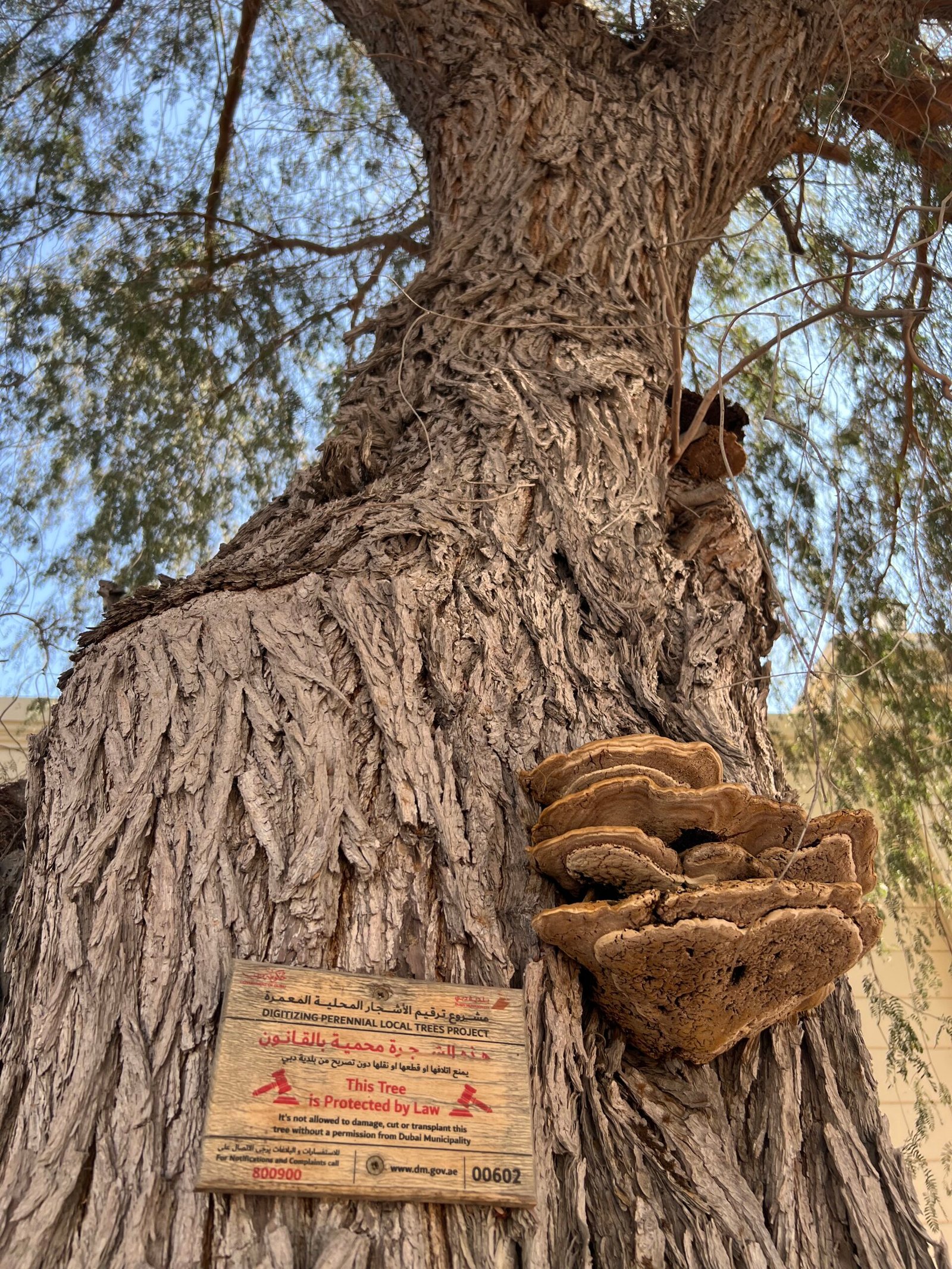
The Ghaf tree has stood as a symbol of survival in the desert of the United Arab Emirates (UAE). Its practicality made it an essential part of life for Bedouin communities. However, its role in the region’s folklore adds a creepy layer to its legacy.
Many believe the Ghaf is not just a tree, but a vessel of supernatural tales passed down through generations.
The Ghaf Tree’s Practical Importance in the UAE
The Ghaf tree has long been a cornerstone of life in the UAE. Its deep roots allow it to survive in extreme desert conditions, making it a rare source of shade and sustenance.
In the past, Bedouins used its wood for tools and its leaves as fodder for livestock. Today, the Ghaf has become a national symbol, reflecting the country’s connection to its natural environment.
But as practical as the Ghaf is, it also occupies a place in the annals of Emirati horror folklore. Stories of unexplained occurrences near its roots have given rise to its reputation as a spiritual and haunted entity.
Whispered Tales of the Supernatural
Across the UAE, stories persist of strange encounters near Ghaf trees. These accounts often involve jinn, beings mentioned in Islamic tradition. While jinn are believed to inhabit desolate places, the Ghaf’s solitary presence in the desert makes it an ideal setting for these tales.
One story frequently shared involves a traveller resting beneath a Ghaf tree near Al Ain.
On a still night, he claimed to hear voices from the tree. At first, they were faint, almost like the wind. Soon, they grew louder, sounding like chants in a language he did not recognize. Fearing for his safety, he fled, leaving behind his supplies. When he returned the next morning, everything was untouched, yet the experience haunted him for years.
Local Legends and Warnings
In smaller villages, Ghaf trees are often seen as untouchable. Cutting down one is thought to invite misfortune.
A man in Ras Al Khaimah reportedly ignored warnings and attempted to chop down an old Ghaf tree. Shortly after, he fell seriously ill, and locals believed the act had angered the tree’s guardian jinn. The man’s condition deteriorated, reinforcing the belief that Ghaf trees are not to be disturbed.
These stories serve as cautionary tales that inadvertently support environmental efforts. By associating these trees with supernatural forces, communities have protected them from overuse and destruction.
Haunted Sites: The Ghaf’s Reputation Endures
Some Ghaf trees have become infamous for their eerie associations. Near Al Madam, a ghost town in Sharjah, a lone Ghaf tree stands at the edge of the abandoned village. Visitors have reported feeling uneasy near the tree, with some claiming to see faint shadows among its branches.
Others describe sudden temperature drops or strange sounds at night.
Another notable tree, located near the Hajar Mountains, is known for a chilling tale involving a shepherd. He tied his goat to the tree before falling asleep nearby. When he woke up, the goat was gone, and the rope appeared to have been burned through.
The shepherd believed a jinn had taken the animal, adding another layer of mystery to the tree’s story.
Superstition Meets Conservation
While these tales may seem rooted in superstition, they’ve played a role in environmental conservation. Fear of supernatural consequences has deterred many from cutting down Ghaf trees, preserving them for future generations. In a region where natural resources are scarce, these stories have indirectly supported ecological balance.
Yet, modern conservation efforts have begun to shift the focus from superstition to science. The UAE has launched campaigns to protect the Ghaf tree as part of its cultural and natural heritage. These initiatives ensure the tree’s survival while keeping its folkloric significance alive.
Encounters in Modern Times
Even today, people share accounts of strange experiences involving Ghaf trees.
A group of campers near Umm Al Quwain reported hearing footsteps around their tent late at night. When they investigated, no one was there. The only thing they noticed was the Ghaf tree near their campsite, its branches swaying slightly despite the still air.
The experience left them shaken, and they chose to leave immediately.
Videos and social media posts also document supposed paranormal activity near these trees. While skeptics attribute such phenomena to natural causes—like wind or wildlife—the stories continue to spark curiosity and debate.
The Line Between Legend and Reality
For many, the Ghaf tree represents more than its physical presence. It is a link to the past, a bridge between the natural world and the unknown. While science provides explanations for some of the eerie experiences, the folklore persists, rooted in cultural memory.
These stories offer a glimpse into the relationship between humans and their environment. The Ghaf tree stands as both a practical resource and a source of wonder.
It’s also a testament to the UAE’s natural and cultural heritage. It symbolizes life in the desert but also carries a sense of mystery that continues to fuel local folklore. The Ghaf remains deeply ingrained in the region’s identity.
For generations, its presence has inspired tales of the supernatural. In the end, the Ghaf tree is not just a tree—it is a storyteller, guarding the secrets of a land where the seen and unseen coexist.